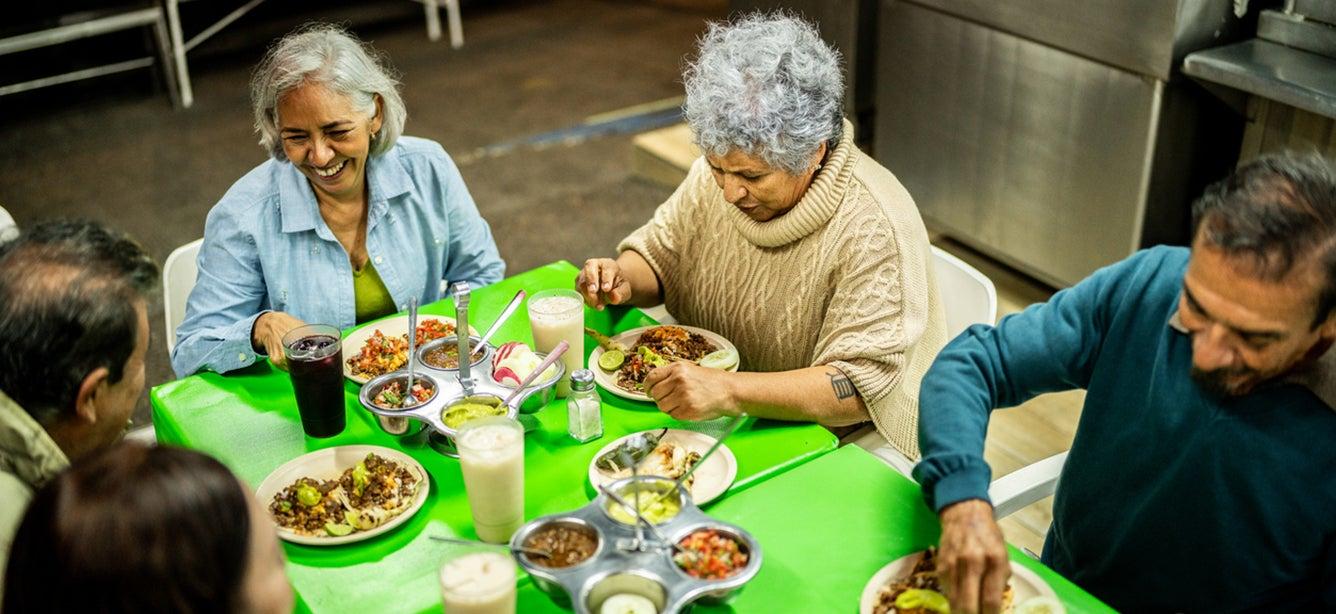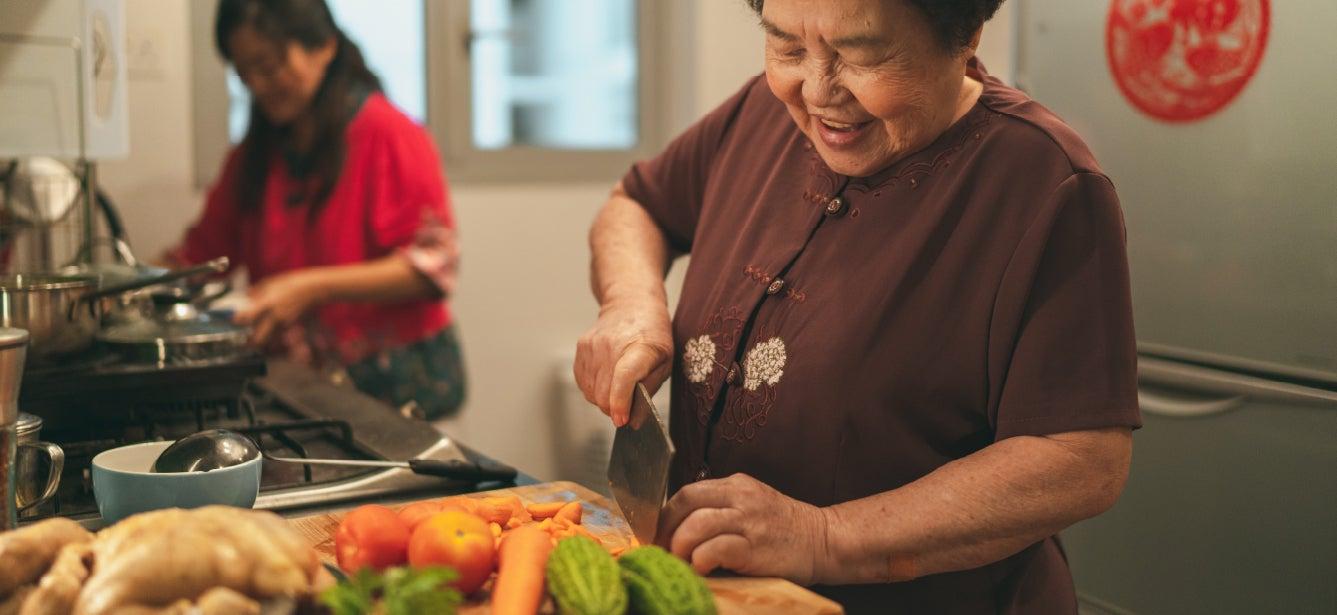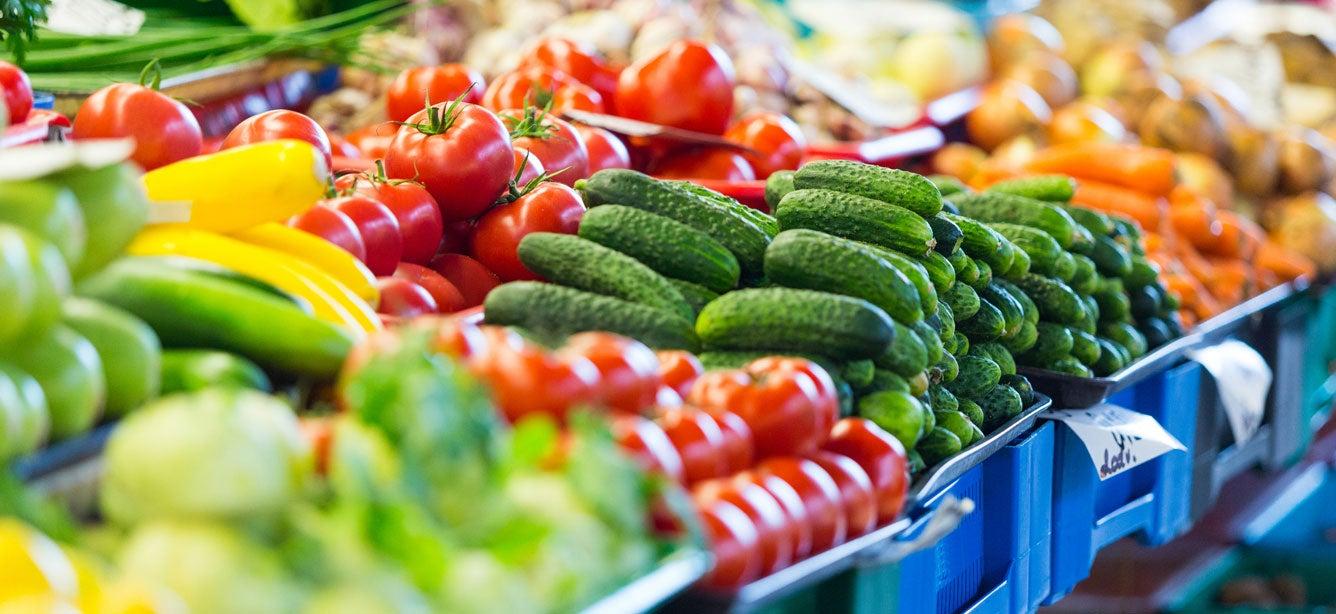Your Recipe for Health: Nutritious Food and Social Connection
5 min read

Related Topics
Do you have fond memories and traditions related to your food? Whether it’s cooking and eating with loved ones in the family kitchen or celebrating life’s milestones with friends, food not only nourishes—but connects us all.
How does food affect your health?
According to Dariush Mozaffarian, MD, DrPH, Director of the Food is Medicine Institute at Tufts University, “Food…is also flavor, joy, family, culture and dignity. But food is medicine as well.”
Indeed, as we grow older, our food and beverage choices have a profound impact on our health. What we eat impacts the ability to prevent falls and fractures. Good nutrition can help delay the onset of nutrition-related chronic disease conditions.
Reasons why food and beverage choices can impact your health as you age:
- We need fewer calories. Our metabolism—the process our bodies go through to maintain basic function and convert food into energy— begins to slow down around age 60. Muscle tissue burns more calories at rest than fat. Studies have found that muscle mass decreases at the rate of 3-8% per decade after the age of 30. This age-related loss of lean muscle mass, strength, and function is called sarcopenia. If we also become less active, sarcopenia can contribute to a slower metabolism and weight gain.1
- We absorb certain nutrients less efficiently. Vitamin B12 helps form red blood cells and plays an important role in the normal functioning of the brain and nerves. Symptoms of vitamin B12 deficiency include tiredness, weakness, confusion, and problems with balance that can lead to falls.
- The rate of bone breakdown outpaces buildup. Throughout our whole lives, our bones go through remodeling, where old or damaged bone tissue is replaced with new bone tissue. This helps our skeleton stay strong and healthy. As we age, bone is broken down faster than it can be replaced, predisposing older adults to osteoporosis. This can lead to an increased risk of bone fractures.
How can I make healthy food choices?
Since they need fewer total calories, older adults should make every calorie count. This means that the focus should be on the quality of food, not quantity. Therefore, choose nutrient-dense foods, which are relatively low in calories but contain high amounts of vitamins, minerals, complex carbs, lean protein, and healthy fats. Examples include:
- Fruits and vegetables
- Whole grains
- Lean meat and seafood
- Eggs, nuts, and legumes
- Low-fat or fat-free dairy products
These are featured in the food groups of the US Department of Agriculture’s MyPlate: a visual guide for making healthy choices.
To maintain muscle mass and strength, new research suggests older adults may need to increase their protein intake to about 1 to 1.2 grams of protein per kilogram of body weight. For a person who weighs 150 pounds, that’s about 5.3 to 6.3 ounces of protein a day.
Protein needs are even greater for some older adults who are healing from surgery, injuries, and other wounds in the hospital setting. Your health care provider may also recommend endurance and resistance training to promote muscle health.
How can meals help me stay connected to others?
While our nutrition requirements change as we grow older, our need for socialization does not. In fact, it is even more important to maintain social connections as we age. Research shows that older adults who share meals with others experience the following benefits:
- Improved physical and mental health. They are more likely to eat nutrient-dense foods and try new foods and recipes, adding variety and quality to their diets. The exchange of experiences, stories, and laughter over shared meals can help combat feelings of loneliness and isolation.2
- Enhanced quality of life. Because of the increased opportunities for socialization and friendship, those who eat often with others report being happier and more satisfied with their lives, and more engaged with their communities.3
Easy ideas for sharing healthy meals
The following ideas are taken from “Recipes for Connection,” a resource developed by the Office of the U.S. Surgeon General:
- Pups n’ pastries: Invite a new friend for a short walk in the neighborhood. Bring some shareable snacks or suggest meeting at your favorite coffee shop. You have to walk your dog anyway, so why not invite a new friend to join?
- Taste test adventure: Sharing food is a great ice breaker. Make an adventure of it—invite a friend to hop around to different stores or markets to taste new samples.
- Sunrise coffee: Invite someone to enjoy the quiet of a sunrise with a morning coffee or tea. Connecting doesn’t always have to involve chatting—sharing in each other’s presence is a powerful way to connect.
- The remix dinner: For a really low-effort gathering, invite friends to bring something they already have in their fridge or pantry. It could be a can of corn, half a loaf of bread, some fruit, a chunk of cheese—anything goes! Someone’s leftovers can be someone else’s delight. It’s the company that counts.
For older adults who have difficulty shopping for or preparing meals due to limited mobility or transportation, here are some great options:
- Join your local congregate meal program. Senior centers, churches, restaurants, and other community settings may host daily congregate meals. These hot, wholesome meals in group settings help forge connections. You don’t have to worry and cooking and cleaning up. Plus, you can meet new people, foster friendships, and build a solid support network.
- Use technology to connect virtually: If your friends or loved ones live far away, you may even consider sharing a meal over Zoom, Facetime, or other video conferencing platforms. While it doesn’t replace being together physically, it does make a difference.
Sources
1. E. Schiffer and S. Koenck. Does metabolism really slow with age? Here’s what the research says. Dec. 9, 2024. Found on the internet at https://www.hellolingo.com/blog/metabolism-and-age
2. R. I. M. Dunbar. Breaking Bread: The Functions of Social Eating. Adaptive Human Behavior and Physiology. September 2017. Found on the internet at: https://doi.org/10.1007/s40750-017-0061-4
3. X. Wang, et al. The joy of eating: how eating experiences enhance the well-being of older adults. Frontiers in Public health. September 2024. Found on the Internet at https://doi.org/10.3389/fpubh.2024.1438964




